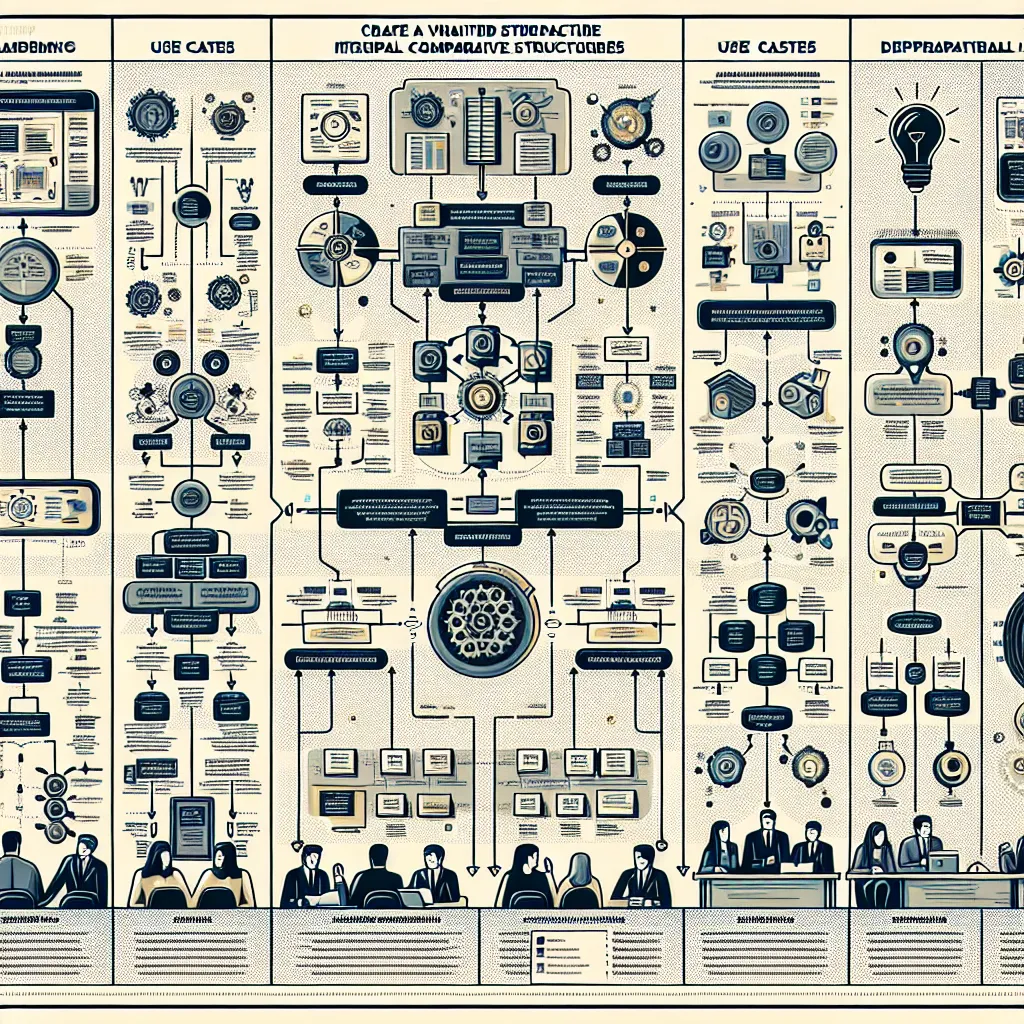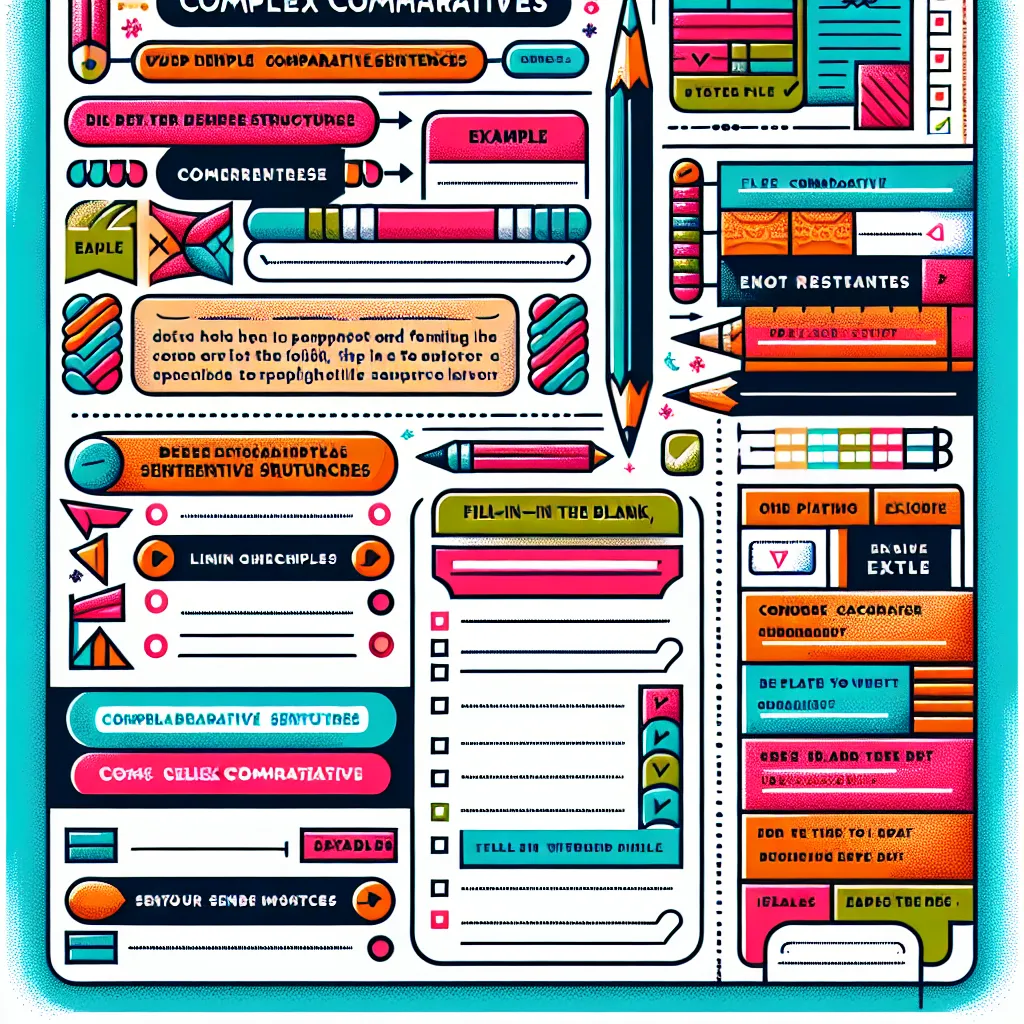In the realm of English grammar, mastering complex comparatives is a crucial skill for both intermediate and advanced learners. This guide will provide you with in-depth knowledge and practical tips to enhance your understanding and usage of complex comparatives, enabling you to express nuanced comparisons with confidence.
Understanding Complex Comparatives
Complex comparatives go beyond simple comparisons and allow us to express more intricate relationships between objects, ideas, or situations. They are essential for conveying subtle differences and making precise distinctions in both academic and everyday contexts.
Why Are Complex Comparatives Important?
- Enhanced Expressiveness: Complex comparatives enable you to communicate more sophisticated ideas and nuanced comparisons.
- Academic Writing: They are frequently used in academic papers, research reports, and analytical essays.
- Professional Communication: In business settings, complex comparatives help in presenting detailed analyses and comparisons.
- IELTS and Advanced English Exams: Mastery of complex comparatives is often assessed in high-level English proficiency tests.
 Complex Comparatives Illustration
Complex Comparatives Illustration
Types of Complex Comparatives
1. Double Comparatives
Double comparatives use “the… the…” structure to show how one thing changes in relation to another.
Example: “The more you practice, the better you become.”
Usage: This structure is excellent for describing cause-and-effect relationships or trends.
2. Proportional Comparatives
These comparatives use “as… as” to show equal relationships or “not as… as” for unequal comparisons.
Example: “The project was not as time-consuming as we had anticipated.”
Usage: Ideal for making precise comparisons between two entities or situations.
3. Comparative with Modifiers
Modifiers like “much,” “far,” “a lot,” or “slightly” can be used to intensify or soften comparatives.
Example: “The new software is far more efficient than the previous version.”
Usage: These help in expressing degrees of difference more accurately.
4. Complex Comparative Phrases
These involve using comparative adjectives or adverbs within more complex sentence structures.
Example: “The company’s growth rate this year is higher than it has been in any of the past five years.”
Usage: Useful for making multi-faceted comparisons or describing trends over time.
Strategies for Mastering Complex Comparatives
-
Contextual Learning: Study complex comparatives in real-world contexts like news articles, academic papers, and literature. This approach helps in understanding their practical applications.
-
Practice with Varied Structures: Regularly construct sentences using different types of complex comparatives. Start with simple scenarios and gradually move to more complex ones.
-
Analyze and Deconstruct: When you encounter complex comparatives in your reading, break them down to understand their structure and function.
-
Use Visualization Techniques: Create diagrams or charts to visually represent the relationships expressed by complex comparatives.
-
Incorporate in Writing: Make a conscious effort to use complex comparatives in your essays, reports, or even daily communication.
-
Peer Review and Feedback: Exchange your writing with peers or a tutor for feedback on your use of complex comparatives.
 Practice Comparatives Exercise
Practice Comparatives Exercise
Common Pitfalls and How to Avoid Them
-
Overcomplication: Don’t make your comparisons unnecessarily complex. Clarity should always be your primary goal.
-
Inconsistent Structures: Ensure that your comparative structures are parallel. For example, “The project is more time-consuming but less expensive than we expected.”
-
Misuse of ‘Than’: Remember that ‘than’ is used for comparisons, not ‘then’. “She is taller than her sister,” not “She is taller then her sister.”
-
Forgetting Context: Always provide sufficient context for your comparisons to make sense.
-
Illogical Comparisons: Avoid comparing unrelated items or concepts. Ensure your comparisons are logical and meaningful.
Advanced Applications of Complex Comparatives
In Academic Writing
Complex comparatives are invaluable in academic contexts for presenting research findings, analyzing data, and drawing conclusions.
Example: “The experimental group showed a significantly higher improvement rate compared to the control group, with the difference being more pronounced in older participants.”
In Business Communication
In business, complex comparatives help in market analysis, performance evaluations, and strategic planning.
Example: “Our new product line is performing far better in urban markets than in rural areas, with sales increasing at a rate three times faster than our competitors’.”
In Literary Analysis
Complex comparatives can be used to discuss character development, plot progression, and thematic elements in literature.
Example: “As the novel progresses, the protagonist becomes increasingly more introspective, with his internal dialogues growing more complex and nuanced than his external interactions.”
Practical Exercises for Improvement
-
Comparison Essays: Write essays comparing two books, movies, or historical events using a variety of complex comparative structures.
-
Data Analysis Practice: Use complex comparatives to describe trends in graphs or charts, focusing on precise and detailed comparisons.
-
Rewriting Exercises: Take simple comparative sentences and rewrite them using more complex structures without changing the meaning.
-
Collaborative Discussions: Engage in debates or discussions where you must use complex comparatives to support your arguments.
-
Translation Challenges: If you’re bilingual, try translating complex comparatives from your native language to English and vice versa.
For more practice on English grammar through conversation, you might find our guide on how to practice English grammar through conversation helpful.
Conclusion
Mastering The Use Of Complex Comparatives is a journey that requires consistent practice and attention to detail. By understanding the various types of complex comparatives, practicing their usage in different contexts, and being aware of common pitfalls, you can significantly enhance your ability to express nuanced comparisons in English. Remember, the key to mastery lies in regular application and a willingness to learn from mistakes. As you continue to practice, you’ll find that complex comparatives become an invaluable tool in your English language arsenal, allowing you to communicate with greater precision and sophistication.
We encourage you to start incorporating these structures into your daily English usage. Share your experiences or any questions you have about complex comparatives in the comments below. For further reading on advanced English grammar topics, explore our other articles on IELTS.NET.




